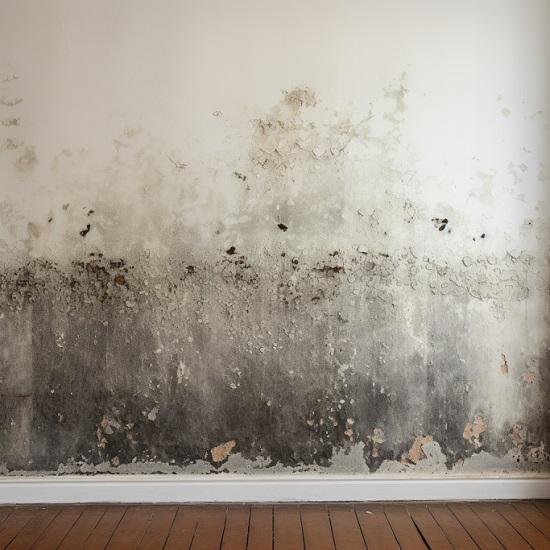Accessing Regional Post Remediation Mold Testing Near Me
Wiki Article
Effective Article Mold And Mildew Remediation Solutions for Your Home
Mold and mildew growth in homes can be a persistent concern, usually calling for a systematic method for effective post-remediation solutions. From understanding the factors that add to mold and mildew advancement to carrying out appropriate cleaning strategies and dampness control procedures, the process can be elaborate yet essential for maintaining a healthy and balanced living atmosphere. Additionally, exploring all-natural remediation solutions and developing a regular for recurring upkeep are vital components of a comprehensive mold and mildew remediation approach. As house owners aim to address mold and mildew issues, locating the most effective options becomes extremely important for the wellness of their households.Comprehending Mold And Mildew Development Aspects
The main aspect adding to mold and mildew growth is wetness. Mold spores require moisture to germinate and thrive, making wet or moist atmospheres highly vulnerable to mold invasions.
In addition, air flow and light direct exposure can impact mold development. Locations that do not have proper ventilation and natural light are extra prone to mold and mildew advancement. By dealing with these variables comprehensively, people can efficiently reduce mold development and protect their living atmospheres.
Correct Mold Cleaning Methods
Using reliable cleaning techniques is crucial in dealing with and protecting against the recurrence of mold contamination in indoor atmospheres. When managing mold and mildew, it is essential to prioritize security by putting on safety equipment such as gloves, goggles, and masks. The initial action in proper mold cleaning is to include the afflicted location to stop the spread of spores to unpolluted locations. This can be attained by sealing the space and using air scrubbers or negative air devices to preserve air quality.
Applying Moisture Control Steps
To properly avoid mold and mildew development and contamination in interior environments, executing wetness control actions is paramount. Moisture is the main aspect that gas mold and mildew development, making it vital to take care of humidity levels within the home. One efficient procedure is to make use of dehumidifiers to preserve interior humidity levels below 60%. Furthermore, ensuring correct ventilation in areas vulnerable to moisture buildup, such as washrooms and kitchens, can help in reducing the risk of mold and mildew development. Routinely examining and repairing any leakages in pipes, roofings, or windows is also important in preventing excess moisture buildup. Making use of exhaust followers while cooking or bathing, and enabling air circulation by maintaining furnishings slightly away from wall surfaces can help in moisture control. Making use of moisture-resistant materials in high-humidity areas, such as mold-resistant drywall and paints, can be beneficial. By faithfully carrying out these wetness control measures, home owners can successfully decrease the likelihood of mold and mildew recontamination and maintain a healthy and balanced indoor setting.Utilizing All-natural Removal Solutions
After successfully carrying out dampness control i loved this measures to avoid mold and mildew growth in interior atmospheres, homeowners can currently discover the efficiency of natural remediation remedies in preserving a healthy space. Natural removal remedies make use of environmentally friendly methods to fight mold and mildew and mildew, making them a preferred choice for those looking for safe choices. One such remedy is using vinegar, a natural antimicrobial agent, to disinfect and clean surfaces contaminated by mold. Simply dilute vinegar with water and spray it onto the affected areas, allowing it to sit for a couple of hours prior to wiping clean. Additionally, tea tree oil, known for its antifungal homes, can be mixed with water and sprayed onto mold-infested surface areas to inhibit more growth. One more all-natural option is hydrogen peroxide, which can effectively kill mold on numerous surface areas remove mold in attic without leaving hazardous residues behind. By incorporating these all-natural removal services into their cleansing regimens, home owners can efficiently battle mold and mildew growth while advertising a much healthier indoor environment on their own and their households.
Maintaining a Mold-Free Atmosphere
Consistently evaluating locations susceptible to mold development, such as shower rooms, cellars, attics, and kitchens, is essential. Proper air flow in areas with high moisture degrees is likewise key to protecting against mold and mildew growth.Furthermore, preserving sanitation in the home is important for mold avoidance. Maintaining interior plants in check and ensuring proper drain in outside landscape design can lessen dampness build-up, decreasing the chance of mold and mildew infestations.
Final Thought
Finally, it is vital to address mold development elements, utilize proper cleansing strategies, carry out dampness control procedures, use natural remediation remedies, and preserve a mold-free environment in order to properly take care of message mold removal in your home - Post Remediation verification. By following these strategies, you can protect against mold and mildew from repeating and guarantee a healthy living setting for you and your family members
The main variable contributing to mold and mildew growth is dampness. Mold and mildew spores require wetness to prosper and germinate, making humid or moist settings extremely prone to mold and mildew invasions.To efficiently prevent mold and mildew growth and contamination in interior environments, implementing moisture control steps is extremely important. Additionally, making sure appropriate air flow in locations i thought about this prone to moisture accumulation, such as cooking areas and washrooms, can aid lower the threat of mold and mildew development.After efficiently carrying out dampness control procedures to stop mold and mildew growth in indoor environments, property owners can now check out the efficiency of natural removal remedies in keeping a healthy and balanced living area.
Report this wiki page